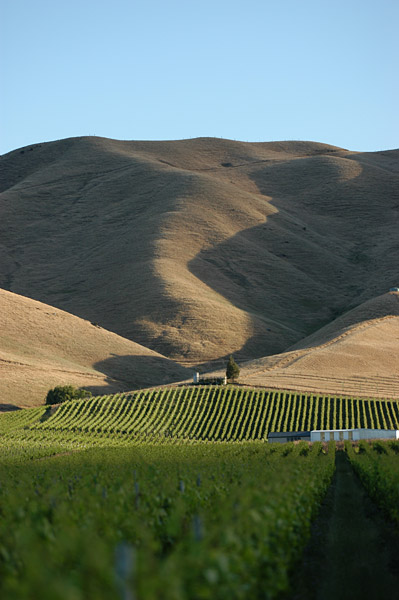We’re all talking about the Southern Valleys when it comes to Marlborough’s finest Pinot Noir, and the quality of the wines seems to suggest that that the clay component in this sub-region’s soils helps to produce the best Pinots in the region.
But before you start saying Southern Valleys good, the rest of Marlborough not-so-good, you had better hold your horses. It ain’t that simple.
There are some excellent Pinots made within the Southern Valleys, and while they outnumber the good Pinots outside of the Southern Valleys, there’s no definitive good-bad dividing line.
Anna Flowerday, co-owner and winemaker of Te Whare Ra, which is situated in the Wairau Valley, explains: “A lot of the hype has been about the Southern Valleys but there’s a lot of [great Pinot-making] pockets in the Wairau.
“We need to talk about Pinot Noir by soil type rather than sub-regions because the soil types within the sub-regions differs quite markedly,” she adds.
In Marlborough’s Southern Valleys, which include the Ben Morven, Brancott, Omaka and Waihope Valleys, clay is a common denominator, bringing a seemingly more dense character, greater fruit weight and more structured Pinot Noir. I often find a delicious cocoa powder-like tannin too.
The Southern Valleys showed its potential early on in Marlborough’s Pinot-making history. Hatsch Kalberer of Fromm Winery, a southern clays Pinot pioneer said: “In 1996 we made the first single vineyard Fromm and Clayvin [wines] and it soon became evident that Marlborough could make some really good Pinot Noir, if the grapes were in the right hands; it seemed that the stonier soils gave Pinot Noirs without substance or textural richness…”
However on the clays, he perceives a “seductive richness” on the nose.
On the stony Wairau Valley floor, the Pinot Noirs are typically lighter in body without great structure. But some wineries find those “pockets” and appear to have the winemaking know-how to build structure in their wines, producing some dense yet fine, pixelated wines.
Meanwhile, over in the Awatere Valley, the cooler conditions and wide diurnal temperature variation creates Pinots with firmer acidity and some herbal characteristics. In warmer seasons, like 2013, the regional characteristics are less apparent but in cooler years, however, Awatere Pinots are a little austere, demonstrating the sub-region’s cooler climes. Other than climatic conditions, it’s difficult as yet to ascertain a distinct terroir but with more vine age, perhaps we’ll see a clearer picture.
In my opinion, vintage variation currently plays as big a role in style as site, particularly in younger vineyards: the 2012 and 2013 vintages from the same vineyards are markedly different, for example.
At this stage in proceedings, it is too early to start making grand statements about sub-regional characteristics in Marlborough. Yes, there are indications that the Southern Valleys might make the best Pinot Noirs in Marlborough but with only 20 years of Pinot-growing experience, don’t speak too soon.
*Image source: Fromm Winery/NZ Winegrowers

